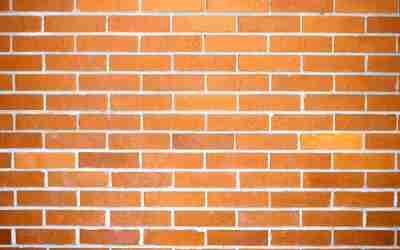Calculus
Chapters
The Quotient Rule for Derivatives
The Quotient Rule for Derivatives
Introduction
Calculus is all about rates of change. To find a rate of change, we need to calculate a derivative. In this article, we're going to find out how to calculate derivatives for quotients (or fractions) of functions.
Let's start by thinking about a useful real world problem that you probably won't find in your maths textbook.
 A xenophobic politician, Mary Redneck, proposes to prevent the entry of illegal immigrants into Australia by building a 20 m high wall around our coastline.
She consults an engineer who tells her that the number of bricks that can be laid on day \(t\) is given by the formula \(\text{brick}(t) = \dfrac{3t^6 + 5}{2t^2 + 7}.\)
A xenophobic politician, Mary Redneck, proposes to prevent the entry of illegal immigrants into Australia by building a 20 m high wall around our coastline.
She consults an engineer who tells her that the number of bricks that can be laid on day \(t\) is given by the formula \(\text{brick}(t) = \dfrac{3t^6 + 5}{2t^2 + 7}.\)
Mary wants to know what the rate of brick-laying will be after 10 days.
This means that she would need to find the derivative of the function \(\text{brick}(t) = \dfrac{3t^6 + 5}{2t^2 +7}\), and evaluate it at \(t = 10\).
Sounds easy enough, but how do we find the derivative of \(\text{brick}(t)\)?
The Quotient Rule
The engineer's function \(\text{brick}(t) = \dfrac{3t^6 + 5}{2t^2 +7}\) involves a quotient of the functions \(f(t) = 3t^6 + 5\) and
\(g(t) = 2t^2 + 7\). There's a differentiation
law that allows us to calculate
the derivatives of quotients of functions.
Oddly enough, it's called the Quotient Rule.
So what does the quotient rule say?
Suppose \(h(x) = \dfrac{f(x)}{g(x)}\), where \(f\) and \(g\) are differentiable functions and \(g(x) \neq 0\) for all \(x\) in the domain of \(f\). Then
The derivative of \(h(x)\) is given by \(\dfrac{g(x)f'(x) - f(x)g'(x)}{(g(x))^2}.\)
I like to remember this as
"The bottom times the derivative of the top minus the top times the derivative of the bottom, all over the bottom squared."
There are a few things to watch out for when applying the quotient rule. First, the top looks a bit like the product rule, so make sure you use a "minus" in the middle. Second, don't forget to square the bottom.
Now let's differentiate a few functions using the quotient rule
Example
If \(h(x) = \dfrac{x^2 + 5x - 4}{x^2 + 3}\), what is \(h'(x)\)?
The function \(\dfrac{x^2 + 5x - 4}{2x - 3} \) is a quotient of the two functions \(f(x) = x^2 + 5x - 4\) and \(g(x) = x^2 + 3\). So, we need to find \(f'(x) = 2x + 5\) and \(g'(x) = 2x\) (using the power and sum and difference rules), and then apply the quotient rule:
So, apart from needing to be careful with the algebra, that wasn't too bad, was it? Let's try another example:
Example
Find the derivative of \(\tan(x) = \dfrac{\sin x}{\cos x}\).
Yes, I know. The derivative rules article tells us that the derivative of \(\tan x\) is \(\sec^2 x\). Let's see if we can get the same answer using the quotient rule.
We set \(f(x) = \sin x\) and \(g(x) = \cos x\). Then \(f'(x) = \cos x\), and \(g'(x) = -\sin x\) (check these in the rules of derivatives article if you don't remember them). Now use the quotient rule to find:
Time for another one?
Example
Find the derivative of \(h(x) = \dfrac{\ln x}{x^2 + 1} \).
This time, we set \(f(x) = \ln x\) and \(g(x) = x^2 + 1\). Then \(f'(x) = \dfrac{1}{x}\), and \(g'(x) = 2x\) (using the power rule). Now use the chain rule to find:
Let's look at one last example, and then it'll be time to deal with the redneck.
Example
Find the derivative of \(h(x) = \dfrac{\sin x + \cos x}{x^3 + 5}\).
We set \(f(x) = \sin x + \cos x\) and \(g(x) = x^3 + 5\). Then \(f'(x) = \cos x - \sin x\), and \(g'(x) = 3x^2\) (check these in the rules of derivatives article if you don't remember them). Now use the quotient rule to find:
Dealing with the Redneck Politician
Now we know enough to solve our politician's problem. The number of bricks that can be laid on day \(t\) is
and Mary wants to know what the rate of brick-laying will be after \(10\) days. So, she needs to find the derivative of the \(\text{brick}\) function and plug in \(t = 10\). It looks like a job for the quotient rule!
Set \(f(t) = 3t^6 + 5 \) and \(g(t) = 2t^2 + 7\). Then \(f'(t)= 18t^5\), and \(g'(t) = 4t\) by the power rule. So, applying the quotient rule,
At \(t = 10\):
It's going to take a long time to build that wall! I don't think we need to worry too much about it.
Description
Calculus is the branch of mathematics that deals with the finding and properties of derivatives and integrals of functions, by methods originally based on the summation of infinitesimal differences. The two main types are differential calculus and integral calculus.
Environment
It is considered a good practice to take notes and revise what you learnt and practice it.
Audience
Grade 9+ Students
Learning Objectives
Familiarize yourself with Calculus topics such as Limits, Functions, Differentiability etc
Author: Subject Coach
Added on: 23rd Nov 2017
You must be logged in as Student to ask a Question.
None just yet!